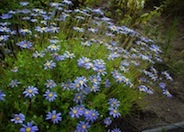
Common name:Blue Marguerite, Blue Felicia Daisy
Botanical name:Felicia amelloides
This shrubby perennial has oval leaves that are 1" in length and dark green in color. It produces a variety of bright blue 1 1/4" wide flowers almost continuously, those of which resemble daisies.
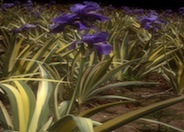
Common name:Zebra Iris
Botanical name:Iris pallida 'Argentea Variegata'
This garden favorite is grown more for its striking silver variegated foliage than its fragrant blue blooms. Avoid intense heat and poor drainage. Deciduous.
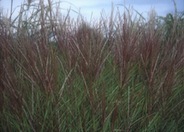
Common name:Eulalia Grass
Botanical name:Miscanthus sinensis 'Silberspinne'
These deciduous grasses grow from 4-7' tall, and often turn orange or dark red before going dormant. Tall, showy spikes of feathery, curved seed heads are borne and retained well into the winter or the following spring. It should receive sun to part
shade, and average to little summer watering. -Monterey Bay Nursery
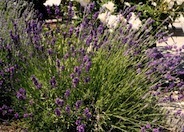
Common name:Munstead Dwarf Lavender
Botanical name:Lavandula angustifolia 'Munstead'
While this hybrid is half the size of the standard angustifolia, it flowers early and has a more intense flower color than most of the species. Its foliage and flowers are good for sachets. This is a perfect choice for smaller scale situations. It is drought tolerant and attracts butterflies and hummingbirds.
-Cornflower Farms
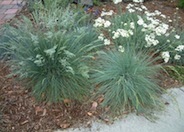
Common name:Common Blue Fescue, Blue Fescuegras
Botanical name:Festuca glauca
This groundcover/grass will grow less than 1' tall and has small, blue-green leaves.
Healthy soil is the cornerstone of a vibrant landscape. It provides oxygen and nutrients vital to plant growth and sustenance. It provides protection from the sun and stability for root systems.
Click in the green box for more information
Designer: Scott Sommerfeld
Photographer: GardenSoft
Maintain a two to four inch layer of mulch on the soil surface to reduce weeds, infiltrate rain water, and reduce compaction.
Attract, or buy beneficial insects such as ladybugs and lacewings to control pest outbreaks in your garden.